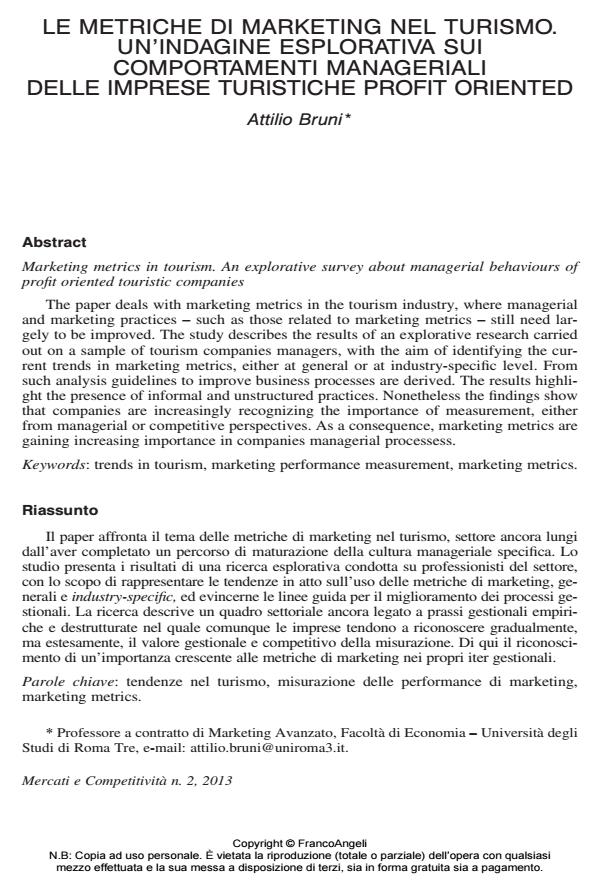Le metriche di marketing nel turismo. un’indagine esplorativa sui comportamenti manageriali delle imprese turistiche profit oriented
Titolo Rivista MERCATI & COMPETITIVITÀ
Autori/Curatori Attilio Bruni
Anno di pubblicazione 2013 Fascicolo 2013/2
Lingua Italiano Numero pagine 25 P. 105-129 Dimensione file 845 KB
DOI 10.3280/MC2013-002006
Il DOI è il codice a barre della proprietà intellettuale: per saperne di più
clicca qui
Qui sotto puoi vedere in anteprima la prima pagina di questo articolo.
Se questo articolo ti interessa, lo puoi acquistare (e scaricare in formato pdf) seguendo le facili indicazioni per acquistare il download credit. Acquista Download Credits per scaricare questo Articolo in formato PDF

FrancoAngeli è membro della Publishers International Linking Association, Inc (PILA)associazione indipendente e non profit per facilitare (attraverso i servizi tecnologici implementati da CrossRef.org) l’accesso degli studiosi ai contenuti digitali nelle pubblicazioni professionali e scientifiche
The paper deals with marketing metrics in the tourism industry, where managerial and marketing practices - such as those related to marketing metrics - still need largely to be improved. The study describes the results of an explorative research carried out on a sample of tourism companies managers, with the aim of identifying the current trends in marketing metrics, either at general or at industry-specific level. From such analysis guidelines to improve business processes are derived. The results highlight the presence of informal and unstructured practices. Nonetheless the findings show that companies are increasingly recognizing the importance of measurement, either from managerial or competitive perspectives. As a consequence, marketing metrics are gaining increasing importance in companies managerial processess.
Parole chiave:Tendenze nel turismo, misurazione delle performance di marketing, marketing metrics.
- Gli strumenti di misurazione delle strategie di content marketing: un confronto tra imprese italiane e inglesi Niccolò Gordini, Elisa Rancati, in MERCATI E COMPETITIVITÀ 1/2015 pp.45
DOI: 10.3280/MC2015-001004
Attilio Bruni, Le metriche di marketing nel turismo. un’indagine esplorativa sui comportamenti manageriali delle imprese turistiche profit oriented in "MERCATI & COMPETITIVITÀ" 2/2013, pp 105-129, DOI: 10.3280/MC2013-002006